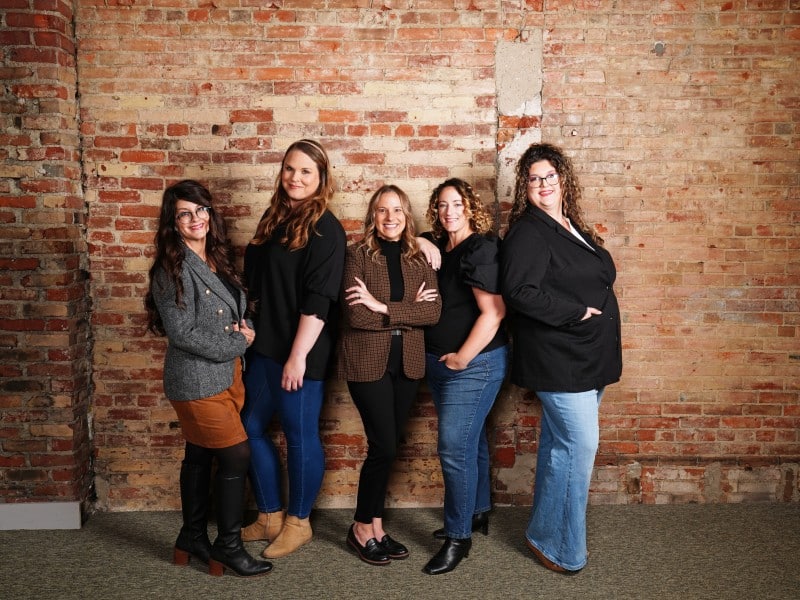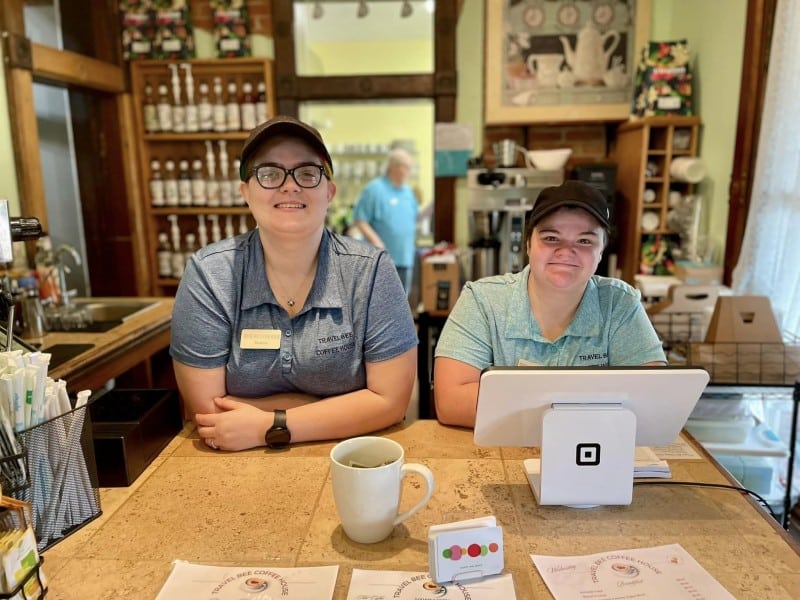What are ‘rate cases’ and how do they impact the cost of your utilities?
“Everybody wants that reliability in infrastructure where there’s electricity or gas and that does come at a cost, but it has to be reasonable. It has to have the consumer in mind, right? So it’s important that that consumer voice gets put out there."

In October of 2023, NIPSCO, which serves 32 counties, filed a request with the Indiana Utility Regulatory Commission (IURC), seeking to increase gas base rates. NIPSCO requested a two-phase, $161.9 million increase in its annual operating revenues.
The process of submitting this price change request is known as a “case” or “rate case.” These are considered legal proceedings, where the utility company is tasked with the burden of proof– or rather, tasked with an explanation of their request rate change.
This case is submitted to the IURC, which is tasked with overseeing more than 600 utility companies that operate in Indiana, including electric, natural gas, steam, water, and wastewater utilities. The IURC is led by five commissioners, all appointed by the governor, and part of their regulation responsibilities, includes overseeing the price of these utilities.
When a utility company, such as NIPSCO or Indiana Michigan Power (I&M) wishes to raise or lower its prices, it must submit a case to the IURC, explaining why it sees a rise in prices as necessary. Oftentimes these cases cite the implementation of new technology, updating equipment, and safety regulations.
This is the case for NIPSCO’s most recent request. According to their website, “The request is largely driven by federal safety and compliance regulations, system upgrades to support economic development and job creation, and infrastructure modernization and improvements that directly benefit customers and communities – including an estimated $1.1 billion in investments through the end of 2024.”
According to a November press release from the Indiana Office of Utility Consumer Counsel (OUCC), this would increase the $16.25 customer service charge, which residential customers see on their monthly bill, to $25.50. This charge does not vary based on usage but rather covers “non-gas” costs, like operating and maintenance expenses and capital infrastructure improvements.
Once filed by a utility company, the IURC has 300 days to issue a final order or make a decision about the price adjustment. As part of its responsibilities, the IURC is tasked with balancing the utility’s interests and the interests of ratepayers, which means ratepayers can directly comment on their views, either positive or negative, of a rate case.
Enter the Indiana Office of Utility Consumer Counsel (OUCC), which is responsible for representing residential, small business, and industrial consumer interests in every case brought before the IURC, as well as cases brought before the Federal Energy Regulatory Commission (FERC) that may affect Indiana consumers.
“We are an independent agency, separate from the Commission,” explains OUCC Spokesperson Olivia Rivera. “State law tasks us with analyzing and filing testimony in utility regulatory cases on behalf of all consumers. Our attorneys, accountants, economists, engineers, and additional analysts review and make recommendations on cases in writing.”
If this process is starting to sound somewhat like a civil court case to you, you’re not far off. Riviera says these rate cases are very similar.
“Keep in mind that a rate case is very similar to a civil court case, except that it is in front of the IURC instead of a court, and the IURC is essentially the judge and jury,” she says.
While the IURC, the utilities companies, and the OUCC are all mandated, key players, they aren’t the only ones involved in these cases.
Third parties, like the Citizens Action Coalition (CAC), can take part as intervenors, which gives them the ability to submit evidence or testimonies and participate.
The CAC is Indiana’s largest and oldest consumer and environmental rights group, and while it might not be mandated to step in these rate cases, it often does appear as an intervenor. The Coalition’s mission is to educate consumers and help coordinate citizen action to better the quality of life for Indiana residents. Bryce Gustafson is a program organizaer for CAC. He says in the Coalition’s 50-year history, they’ve been able to save Indiana taxpayers over $10 billion in excessive rate increases.
To present testimony and information that represents the ratepayers, the OUCC and CAC look to the public for input. Rivera says all public comments are entered into the formal case record and as part of the case record, the commissioners are required to review them.
After a case has been submitted, the OUCC invites consumer comments for their formal record. Consumer comments on rate cases can be sent via mail, fax, email, or on their website.
The CAC also provides a submission form on its website for consumers to write their thoughts on specific rate cases. Gustafson says this is the public chance to speak out and be heard on issues that matter to them.
“They should get their voices heard on this issue,” Gustafson says. “The more, the better. Your voice does matter in these issues, even if you don’t feel like it does. It’s important to let the powers that be know how you feel about these rate increases because they just keep coming and we can do better than what we’re doing now.”
The IURC may also hold Pubic Field Hearings, where consumers can directly speak to the commissioners about a specific case. Comments made at these meetings hold the same value as comments sent to the OUCC and will be part of the official record.
For NIPSCO’s gas base rate case, two Public Field Hearings were scheduled. The first, scheduled for early January was held in Fort Wayne. A second is scheduled for January 23 in Hammond.
Gustafson says he often attends the Public Field Hearings to get a pulse on what’s going on in the community.
“By and large, I can’t really put a percentage out on it, but almost everybody that speaks, speaks to the idea of affordability and are opposed to more rate increases,” he says.
Jeff Hale, a retired higher education administrator, was present at the Fort Wayne meeting and spoke against the rate increase. He was one of six people who spoke to the IURC at that meeting.
Whether speaking for or against changes like a utility rate increase, Hale says he believes it’s fundamentally important that people not stay quiet on important issues, so he chose to comment at the hearing.
“My comments primarily surrounded seniors, who are obviously on fixed incomes and in many cases not in a position to go out and add to their income by working,” he explains. “Anytime there’s an increase in expense, especially something that’s out of their control, it can create hardship, but certainly creates an adjustment to how they go about managing money.”
As someone who entered the “senior demographic” in the past year, Hale says it’s made him more attuned to what’s happening.
Jason Tomcsi is the communications director for AARP Indiana. He says continuing to increase the price of utilities can be a problem for older adults with limited income and limit their ability to age in place.
“It is a part of housing costs,” Tomcsi says. “The ability for folks to stay in their homes and communities, as we say ‘age in place,’ it comes to a point where your housing may still be okay, but your utility cost keeps going up and up and you can’t afford to keep heating your house or whatever it might be. That impacts your ability to stay in your home and community.”
In these rate cases, utility companies typically argue they’re a critical service for the community, which as Tomcsi says, is true, but it needs to be balanced.
“We want it to be the best it can be,” he says. “It’s just making sure that it’s the best that it can be at a rate that is affordable for the ratepayers because ultimately that’s who is going to be paying for it.”
He says the more people speak up during the public comment window of these cases, the more impact it will have on the outcome.
“The IURC Is charged with having affordability as one of the things they need to consider in these rate cases, so more customers that come out and say, ‘This is going to impact me. My rent has gone up. My medicine has gone up. My food has gone up and now I have to pay on this,’” Tomcsi explains, “then, at some point, the tough choices have to be made as those stories get relayed.”
Then, the hope is that the IURC, or even the utility company, will conclude that they don’t need the amount they initially asked for.
After considering all the evidence presented, the IURC will come to a decision. However, the involved parties can come to a settlement at any time during the process, but the IURC can change, deny, or modify it. A settlement must be approved by the IURC before it can take effect.
A decrease in the rate is not uncommon in these cases. For example, in a rate case started in 2023 by Indiana Michigan Power (I&M), the utility company originally asked for a $116.4 million increase, but in the settlement agreement announced in late December, the involved parties agreed on an amount just under $62 million. The IURC will rule on that case in the first half of this year.
Representatives from both OUCC and the CAC say they agree that public input is important to the process.
“That’s your opportunity to stand up and make your voice heard and, you know, those opportunities don’t come along every day,” says Gustafson. “I think it’s very important to do that.”
But an important part of knowing when you can speak up about these issues is knowing that they’re even happening. Tomcsi says people are busy, and in the past, they might not have noticed these increases until it was too late and their bills had gone up, but he’s hoping that will change.
“It’s important to have these conversations and let people know about it beforehand when there’s still an opportunity to potentially lessen whatever that increase may be,” he says.
Looking at Indiana’s past, Gustafson says the state used to reside in the top 10 for the lowest utility bills, but those days are long gone.
“In 2000, we were in the top 10 lowest for utility bills and now, we’re 12th highest in utility bills,” he says. “That doesn’t happen by mistake.”
Rate cases are a long, complicated process, and arguably one that is not well publicized or understood. Furthermore, they’re part of an essential service, that every household uses. Even if you’re not a NIPSCO gas customer, you still utilize utilities that power your homes and are subject to the same cost adjustment protocol.
Hale admits wouldn’t have known about the NIPSCO gas base rate case were it not for a local organization he’s involved with and he says he’s disappointed that the company proposing a rate change doesn’t make more of an effort to get that information out there.
“I would think it’s not just the utility commission that is responsible for posting that information,” he says. “I would think that the people proposing the increase would have at least a fair business responsibility to tell its customers when something is being proposed.”
He didn’t shy away from sharing that at the Public Field Hearing he attended either.
“I want to like that entity,” says Hale. “I want to work with that entity, but I also want open and honest and transparent communication. In fact, one of my comments was, that I read their value statement and it’s clear within their value statement that they want collaborative relationships with stakeholders, but they also want strong transparency. And at least in this case, I can’t see where that occurred.”
Organizations such as AARP and the CAC are making efforts to get information to Hoosiers about their utility services, including information on assistance programs and other related issues like access to solar energy.
“Everybody wants that reliability in infrastructure where there’s electricity or gas and that does come at a cost, but it has to be reasonable,” Tomcsi says. “It has to have the consumer in mind, right? So it’s important that that consumer voice gets put out there. The more people that speak up– the hope is that more folks will take notice about these increases and the impact that they’re going to have.”
For more information or to submit your comments on the current NIPSCO gas base rate case, click here. Written comments must be submitted no later than January 24, 2024.
To learn more about the rate case process and how utilities work in Indiana, visit the IUCR’s Utility Guide here.
This story is made possible by support from AARP Indiana.











